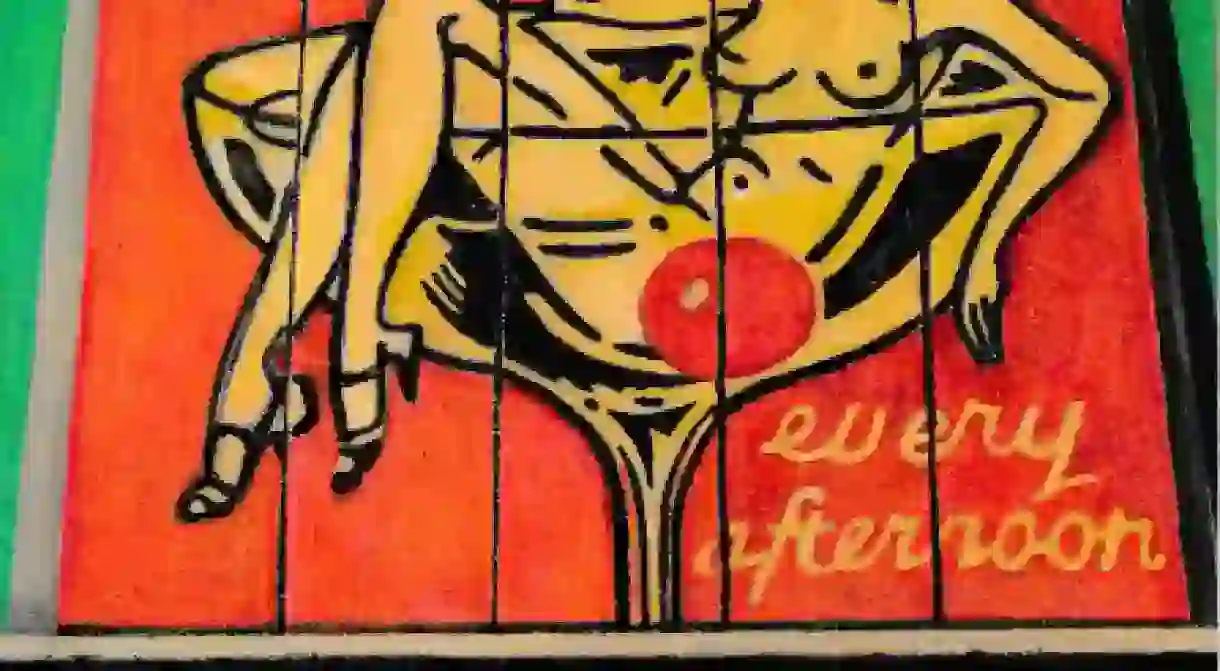Interview With Aaron Kasmin, The Artist Behind 'Lucky Strike'

The Lucky Strike exhibitionby artist Aaron Kasmin opens the Sims Reed Gallery‘s 2016 programme, with colourful pencil drawings derived from his the artist’s penchant for America‘s chic post-prohibition era. We spoke to Kasmin about the series of miniature drawings which reflect the rise of America’s consumer culture, his artistic methods and his favourite marketing campaign from that time.

Was being an artist something you aspired to be from a young age?
Yes, somehow I can’t remember a time when I didn’t want to be one! I come from a family of artists. On my mother’s side, her grandfather was William Nicholson and her uncle, Ben Nicholson, so I suppose you could say that art is in the blood. My father was a well-known art dealer and represented David Hockney. He gave Hockney his first contract when he was still a student.
Can you give us a brief run-down of your work process?
The way I find easiest is to work at regular hours, a bit like a ‘real’ job, even though my studio is at home. Working from home you need to try harder to be completely focussed, although Picasso always enjoyed it when his children came and joined in… For this exhibition, I started by planning which of my matchbooks in my collection I thought would best translate into lively images. Normally my work is much more spontaneous.
How did pencil drawings become your preferred artistic method?
I found the chalk pencils I used many years ago and found that you could mix the colours together endlessly. They can also be used very finely for great detail. With paint it would all be far too fussy; drawing is a much more immediate medium.

From idea to finished work; how long did Lucky Strike take to create?
The whole show probably took most of a year. It took a while to work out how I wanted to draw them and then I got onto a roll. I found that I needed to treat the drawings as interesting, unique images and not just reproductions.
What was your main objective when curating Lucky Strike? What do you wish your audience to take from the exhibition?
I started collecting these very original matchbooks a few years ago and I have always enjoyed showing them to other people. It has taken me a long time to incorporate them into my own work. What I really hope is that the show brings these almost unknown ephemeral objects to a wider audience, and that they can enjoy my drawings that have been inspired by them.
Do you have a favourite marketing campaign from the post-prohibiton era?
My favourite one is for Neil’s paint company, where the stem of the match is a paint brush and the striking bit a blob of paint on the brush. The sheer variety of companies – from sellers of prosthetic limbs to nightclubs, laundrettes and restaurants – which used these small matchbooks for advertising is incredible.

How did your partnership with Sims Reed Gallery begin?
I initially showed the Gallery Director, Lyndsey Ingram, a photo of the one drawing I had done featuring a detail of a matchbook. She got very excited and proposed doing a whole show of them and displaying my collection. Since then, the gallery has been incredibly supportive and come up with the idea of making me a matchbook private view card, and they are also painting the gallery red, white and blue to make the ambiance more American!
As an artist, what are the essential factors you consider when partnering with a gallery?
Empathy and commitment.
In London, where do you seek inspiration?
Museums and galleries mostly. The Soane Museum is a favourite; it is stuffed full of wonderful things from an Egyptian sarcophagus to Hogarth’s Rakes Progress and, because it only has gas light, the atmosphere is always mysterious as the light is constantly changing.
I loved the Tate shows of Matisse cut-outs and the Sigmar Polke. Their Calder show is a must-see. The V and A is great, especially the forgotten corners.
I also get inspiration from walking on Hampstead Heath, which is a great place for clearing your head. Just being in the metropolis is inspiring.

What helps you to stay motivated, innovative and ambitious in your work?
I just really enjoy being an artist and it is projects like this that motivate me.
How do you feel the London art scene is evolving? Both in terms of local artists and the wider art market?
The London art scene is exciting and always appears to be thriving, and it is a great place to be involved in the creative industries.
Lucky Strike opens at Sims Reed Gallery on the 22nd of January and runs until the 5th of February, 2016.
Sims Reed Gallery, 30 Bury Street, London, UK
Interview conducted by Danielle Wood













